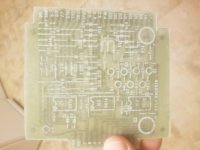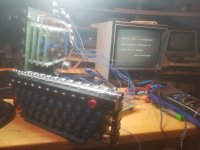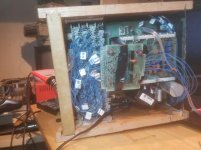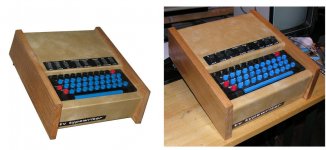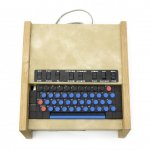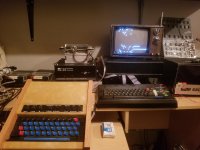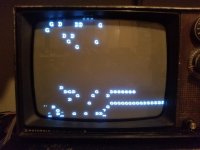So I think if I don't get this encoder fixed today I am going to build a new one. It's just totally buggered and I cannot make heads or tails of it. The only keys that work are those that produce 1's for the first three bits (B1-B3). If I type A, I get a @. If I type N, I get an H.
I've really, really tried to read the schematics and understand what is going on, but just as I was never able to master math, I cannot understand how it works enough to properly troubleshoot it. It makes no sense to me that bit 1, which is high by default, goes low when A is pressed. I don't *think* the keyboard is at fault.. I've gone over it several times looking for wires that aren't where they should be, etc.. but no dice. Just as a last resort, I'm going to totally disconnect it and try running the encoder manually.
I've kind of wanted to redo the encoder anyway - it's on modern PCB stock and kind of sticks out. The quality of my etching at the time was pretty poor. I've only let it live this long because it was my first project, and until now was working.

